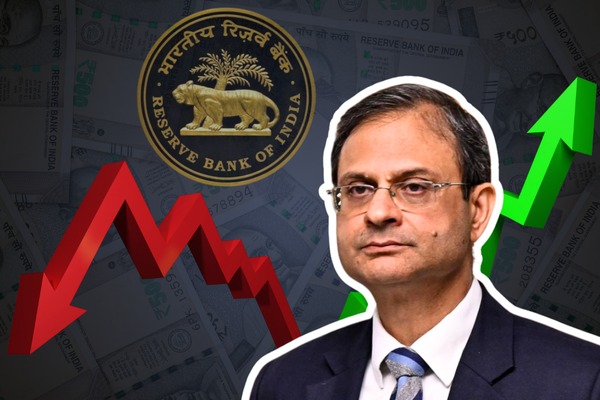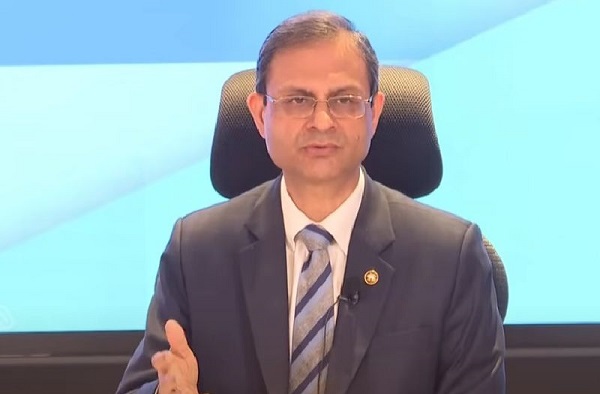.png)
Unguarded Lending Won’t Fix Investment Demand
RBI holds rates but eases bank lending curbs—IPO, M&A, securities finance. Yet without investment demand or PPP reforms, such a leeway won’t fix growth.


By TK Arun
T.K. Arun, ex-Economic Times editor, is a columnist known for incisive analysis of economic and policy matters.
October 2, 2025 at 11:53 AM IST
The RBI’s latest monetary policy and regulatory pronouncements are a strange mixture of caution and recklessness. The policy appreciates that with inflation depressed, not only because of well-behaved food prices but also because of deficient demand that has sent fast-moving consumer goods companies into depression, real interest rates in the economy are high. Yet, given what Trump is doing to uproot the dollar as the anchor currency of global finance, and the disruption this could unleash in exchange and interest rate regimes that the world has been used to, the RBI deems it prudent to wait, when it comes to lowering policy rates. This is appropriate.
But why throw caution to the winds and allow banks to step into shoes that do not fit their stodgy feet? Limits have been removed on lending against listed securities. Lending to finance initial public offerings has been made more liberal. Banks have been allowed to lend to finance corporate acquisitions.
How fair is it to label such lending reckless? These are all legitimate activities, which some agency or the other would undertake, even if banks virtuously stay away from them. In a scenario where companies are not borrowing from banks on any large scale to expand capacity, and all that additional liquidity the RBI injected into the system is weighing down bank finances with minimal returns, why not let the banks make some money, at least, by easing up a little on the restraints that curb bank lending in these areas?
The governor’s statement has the following sentence: “Rising capacity utilisation, conducive financial conditions, and improving domestic demand should continue to facilitate fixed investment.” Let us parse this a bit. “…should continue to facilitate fixed investment,” says the governor. Fixed investment has not been happening, so where is the question of facilitating fixed investment? Or of continuing to facilitate fixed investment? And what is the basis for “rising capacity utilisation”? The RBI’s own survey on capacity utilisation reports a rise of 30 basis points in capacity utilisation, to less than 76% of existing capacity.
If we can’t fix it, let us spin it — is that the new Mint Street Mantra?
And the RBI cannot fix the lack of investment demand. For that, the government has to deliver on its Budget promise to come out with a new policy for Public Private Partnership in infrastructure. When industry sees stagnant capacity utilisation, it cannot really invest to expand that capacity. But there is plenty of entrepreneurship in the private sector that can invest in building the infrastructure that India needs, to sustain fast growth. After having damned the UPA government’s PPP projects as vehicles for loot, the present ruling dispensation cannot expect the private sector to invest in largescale infrastructure without freshly-formulated structured support from the government.
Different sectors call for different policies. For airports, the modernisation projects have been awarded on the basis of bidding on a single parameter: how much revenue would the operator part with the government? This amounted to open invitation to rig the bidding by means of unrealistically high offers of revenue share with the government. Such offers could be made only by operators who have the confidence that they can use their clout with the government to have airport development charges and user development fees jacked up, to generate enough revenue to make good on those lavish revenue share promise without crimping operational profits. Ideally, the bid parameter needs to have an element designed to hold down costs as well.
This is one example of how PPP policy needs to be worked out for different sectors. This is beyond the RBI’s scope.
But what the RBI can do is to remove its insistence on controlling the market for government debt. The market for listed debt securities must become a unified whole, corporate and government, with the facility to hedge against risks across instruments and maturities.
Such a debt market should finance infrastructure projects, mergers and acquisitions and non-banking finance companies that have the manpower and the expertise to actually lend to micro, small and medium enterprises by the million.
Has the RBI done anything to create such a vibrant market for debt in India? Probably some well-meaning RBI officials have wrung their hands enough to raise the demand for hand cream in this slow market.
By letting banks finance mergers and acquisitions, the RBI acts as if it does not see the scope for bankers to collude in unscrupulous related-party transactions all over the place. On the surface, banking is all good and healthy. But can we shut our eyes to the steady dribbling of rot from IndusInd Bank?
In the section on liberalising foreign exchange transactions, it is mildly puzzling that the increasing tendency for foreign companies to raise capital in India does not find mention. Hyundai’s South Korean parent took out a tidy sum of capital from India, selling a chunk of its holdings in its Indian subsidiary. Its success has inspired LG to do a similar IPO. These are welcome developments and increase the internationalisation of the rupee. The public at large would be keen to know the RBI’s thinking on the subject.
The Indian public is everlastingly patient. We will wait to find out.
Also read:
RBI’s Baby Steps on Rupee Globalisation: Useful Nudges, But…
RBI Fixes its June Communication Misfire
RBI’s Insulated Optimism Jars with Ground Reality
RBI Reopens the Door to Accommodation
Partly Monetary Policy, Largely Credit Policy
Review of MPC Decision: What Does it Mean to be Forward-Looking?



